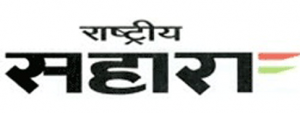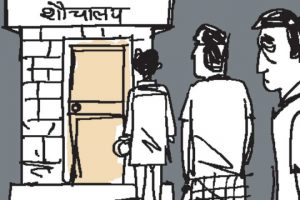News Clipping on 31-07-2018
Date:31-07-18
Stigmatised Capitalism
Tarring all business as crony capitalism keeps India from realising its economic potential
TOI Editorials
Prime Minister Narendra Modi on Sunday made an important intervention in long running political arguments over corruption. He pointed out that industrialists were integral to building a nation and he is unafraid to engage them. He stated the obvious but it still made headlines – because Indian society has an uneasy relation- ship with business, characterised by distrust. This is the prism through which the engagement of politics and business is seen. Consequently, a path to power in politics is to paint the incumbent government’s policy as one encouraging cronyism.
All political parties are guilty of this approach and the outcome has been India’s economic underperformance. Arvind Subramanian, former chief economic adviser, described it as a journey from crony socialism to stigmatised capitalism. Modi’s public positioning is important as he is willing to use his political credibility to break free of this negative narrative. This is a necessary condition for India’s economic progress. Most of the country’s job creation and economic dynamism come from private business. Unless this segment finds a way to operate in an open and conducive environment, India will remain an economic underperformer.
For sure, violations of law by industrialists shouldn’t be ignored. The key question is whether the legal framework encourages rent seeking. Last decade’s surge in bank lending for infrastructure development and the attendant bad loan problem are a symptom of a framework where governments retained enormous discretionary power that eventually led to an erosion of public trust in the fairness of the system. If this mistake is to be avoided, India must encourage a pro-market system where the most capable entrepreneurs succeed as against the best networked. Acknowledging the role of India Inc in growing the country is only the first step.
Date:31-07-18
Who’s Left Out?
Assam citizenship register spreads fear and uncertainty, has opportunity costs
TOI Editorials
With the publication of the final draft of Assam’s National Register of Citizens (NRC) around 2.9 crore out of 3.3 crore applicants have found their names in the list. It will be recalled that the NRC is an Assam specific exercise to identify illegal migrants and determine genuine Indian citizens. This is the first time that the NRC in Assam is being updated since 1951. The exercise received fresh momentum when the current BJP-led government came to power in the state in 2016. Those residing in Assam before March 25, 1971 and their descendants are eligible for inclusion in NRC, congruent with provisions of the 1985 Assam Accord.
To underline, the final draft has left out around 40 lakh applicants. True, Assam chief minister Sarbananda Sonowal has urged calm saying that those who haven’t been included won’t yet be treated as foreigners and will have ample chances to have their applications reviewed. But allegations have already risen that the exercise is biased against Bengali-speaking residents of Assam. Add to this the fact that 40 year old legacy documents required for NRC inclusion may not be handy with genuine citizens in a country with a weak documentation culture.
Centre has added another layer of complication by proposing a bill to modify the Citizenship Act, 1955, to grant citizenship to religious minorities – specifically Hindus, Sikhs, Buddhists, Jains, Parsis and Christians – from Afghanistan, Pakistan and Bangladesh who have been residing in India for at least six years and entered the country before December 31, 2014, to escape religious persecution. This is in contravention to the Assam Accord and conflicts with the NRC exercise. Protests have apparently forced a rethink on the bill.
Assam has long borne the brunt of migration from neighbouring Bangladesh but NRC isn’t the best way to address the issue. Massive resources deployed for the exercise could arguably have been better ploughed into beefing up border security or developing the state. After all Assam suffers poor human development indices and widespread joblessness. With insurgency in the state at a decade’s low a governance focus could be very fruitful. The state should also capitalise on being at the heart of India’s Act East policy. Legacy issues are important. But they shouldn’t cost the present and future progress of Assam.
Date:31-07-18
No Anti-Foreigner Agitations Again
ET Editorials
Home minister Rajnath Singh says no coercive action will be taken against anyone, amidst the tension spawned by National Register of Citizens publishing its draft list that excludes 40 lakh applicants in Assam. The state chief minister echoed him. We hope they live up to their promise. However, the fact that the Centre has rushed 22,000 security personnel to Assam shows the scope for trouble. Such a report was last compiled in 1951, soon after independent India’s first census. In the 70 years since, politics in Assam has gone through spasms of extreme xenophobia, based on the so-called division between ‘natives’ and ‘immigrants’. This suits parties like the Asom Gana Parishad (AGP), offspring of the AASU that led the violent ‘anti-outsider’ movement of 1979-80, and came to power in its aftermath.
Today, people, mostly deprived rural Muslims, are expected to provide documents that go back nearly half a century on both paternal and maternal lineages to prove their ‘Assamese’ identity. The predictable outcome is that four million people, 33% rural women from the most backward district, have failed the test. Deportation was threatened, but the government, perhaps taken aback by the extent of national revulsion at the prospect of democratic India trying to drive innocents to statelessness, now says there is scope for redress and appeal. Bengal chief minister Mamata Banerjee has questioned the Assamese government’s logic of persecuting people who have documents like passports, ration and Aadhaar cards, when Bengal could deal with a much larger refugee influx than Assam ever did.
India passed a law to mandate registration of deaths and births in 1969. Implementation was patchy: 30 years later, 55% of births were registered, leading to a national campaign to register births in 2004. In such a country, proving citizenship can be very hard, especially for the landless poor. They should not become victims of some parties choosing identity politics as the route to power. Political instability in the northeast arising from declaring some sections as foreigners is best avoided.
Date:31-07-18
आधार नंबर पर ‘शक्तिमान’ बनने से बचना बेहतर होगा
ट्राई के अध्यक्ष ने आधार नंबर सार्वजनिक कर उसे पूर्ण सुरक्षित दिखाने का जो प्रयास किया, उससे नए किस्म के विवाद खड़े हुए
संपादकीय
भारतीय दूरसंचार नियामक प्राधिकरण (ट्राई) के निवर्तमान अध्यक्ष डॉ. रामसेवक शर्मा ने अपना आधार नंबर सार्वजनिक करके उसे पूर्ण सुरक्षित दिखाने का जो प्रयास किया है उससे नए किस्म के विवाद उठ खड़े हुए हैं। हैकरों ने उनकी बहुत सारी निजी सूचनाएं उजागर करके उनके खाते में एक रुपए भी डाल दिया है, जबकि उनका कहना है कि इससे उनका कोई नुकसान नहीं हुआ है और जितनी निजी जानकारियां हासिल करने का दावा किया जा रहा है वे भारतीय विशिष्ट पहचान प्राधिकरण के डेटाबैंक से नहीं गूगल और दूसरी साइटों से प्राप्त की गई हैं।
डॉ. शर्मा की इस चुनौती का सैद्धांतिक पहलू इस लिहाज से ठीक है कि इससे आधार के आंकड़ों की सुरक्षा के बारे में प्राधिकरण और चौकस हो जाएगा और हाल में आई श्रीकृष्ण पैनल की रिपोर्ट के सुझावों पर गौर करेगा। पैनल ने अपनी रिपोर्ट में कहा था कि आधार कानून में और संशोधन किए जाने की जरूरत है ताकि किसी की पहचान प्रमाणित करने का अधिकार सिर्फ सरकारी अधिकारी के पास ही रहे और पहचान प्रमाणित करने का तरीका ऑनलाइन न होकर ऑफलाइन हो। सुप्रीम कोर्ट में आधार परियोजना की संवैधानिकता और निजी गोपनीयता की सुरक्षा के सवाल पर चल रही सुनवाई के बीच इस तरह के सवालों और सुझावों की बहुत उपयोगिता है। इससे न्यायालय को इस परियोजना को दोषरहित बनाने और सरकार को चौकसी के आदेश देने में मदद ही मिलेगी। आरएस शर्मा पहले भारतीय विशिष्ट पहचान प्राधिकरण के सीईओ रहे हैं और हो सकता है कि उनको उसकी प्रौद्योगिकी के बारे में गहरी जानकारी भी हो।
इसके बावजूद अगर उन्हीं की तर्ज पर देश के दूसरे सामान्य नागरिक अपना आधार नंबर सार्वजनिक करने लगें तो उनके साथ वही हो सकता है जो शक्तिमान की नकल में अभिनय करने वाले बच्चों का हो सकता है। संभव है डॉ. शर्मा ने अपने अकाउंट नंबरों को दोहरे पासवर्ड से सुरक्षित कर रखा हो जो काम सामान्य नागरिक नहीं कर पाता। लेकिन, नुकसान की परिभाषा हर व्यक्ति की अलग-अलग भी होती है। सामान्य जन अपनी सूचनाओं के कारण अक्सर साइबर अपराधियों के निशाने पर होते हैं। इसलिए अच्छा हो कि इन तमाम सैद्धांतिक और व्यावहारिक पहलुओं पर सुप्रीम कोर्ट विधिवत विचार करे और एक ऐसा फैसला दे, जिससे आधार परियोजना जनता को दुख नहीं सुख देने वाली साबित हो।
Date:31-07-18
सेवा से संवरेगी गांवों की तस्वीर
हमें अपनी रणनीति कृषि उत्पादन से हटाकर सेवाओं के उत्पादन पर केंद्रित करनी होगी। तभी हमारे गांवों का विकास हो सकेगा।
डॉ. भरत झुनझुनवाला , (लेखक वरिष्ठ अर्थशास्त्री व आईआईएम, बेंगलुरु के पूर्व प्राध्यापक हैं)
देशभर में किसान इस समय परेशान हैं। दूध एवं दूध आधारित उत्पादों के उत्पादन में वृद्धि हुई है, जबकि खपत स्थिर बनी हुई है। इससे बाजार में दूध के दाम गिर रहे हैं और किसान त्राहिमाम कर रहे हैं। इस समस्या से निपटने का पहला उपाय है कि हम निर्यात बढ़ाएं। सरकार ने इस दिशा में कुछ सार्थक कदम भी उठाए हैं और दुग्ध उत्पादों पर निर्यात सबसिडी में वृद्धि की है, लेकिन विशेषज्ञ बताते हैं कि इस सबसिडी के बावजूद न्यूजीलैंड में उत्पादित दुग्ध पाउडर की तुलना में हमारा दुग्ध पाउडर करीब 20 प्रतिशत ज्यादा महंगा पड़ता है। ऐसे में सबसिडी में भारी वृद्धि किए बिना यह रास्ता कारगर नहीं होगा।
दूसरा संभावित उपाय है कि हम दूध के पाउडर के स्थान पर चीज़ और मक्खन बनाकर उनका निर्यात करें। इसमें भी समस्या यही है कि अंतरराष्ट्रीय बाजार में चीज़ और मक्खन के दाम भी दूध के दाम के अनुरूप ही गिर रहे हैं। इस तरह चीज़ और मक्खन के निर्यात करने में हमको उतनी ही समस्या आएगी, जितनी हम दूध के पाउडर के निर्यात करने में सामना कर रहे हैं।
तीसरा उपाय है कि मध्याह्न भोजन जैसी योजनाओं के अंतर्गत दूध उपलब्ध कराया जाए। कर्नाटक ने ऐसी योजना बनाई है, जिसमें बच्चों को मध्याह्न भोजन के साथ दूध भी दिया जा रहा है। यह एक सार्थक कदम है। इस प्रकार के प्रयोग तमाम अन्य देशों में भी हुए हैं। लेकिन हमारा दूध का उत्पादन तो बढ़ता ही जाएगा। जैसे-जैसे सरकार द्वारा सबसिडी दी जाएगी, वैसे-वैसे किसान के लिए दूध का उत्पादन लाभप्रद हो जाएगा और वह दूध का उत्पादन बढ़ाने के लिए प्रोत्साहित होगा। हम बढ़े हुए उत्पादन का मध्याह्न भोजन के रास्ते निरंतर निस्तारण नहीं कर पाएंगे।
दूसरी बात यह भी है कि जब मध्याह्न भोजन जैसी योजनाओं के जरिए हम दूध की खपत बढ़ाते हैं तो परिवार द्वारा दूध की खरीद भी कम होगी, क्योंकि परिवार को मालूम है कि बच्चे को विद्यालय में दूध उपलब्ध हो रहा है। यदि हम मध्याह्न भोजन के माध्यम से 100 किलो दूध की खपत करते हैं तो परिवार द्वारा 50 किलो दूध की खपत कम हो सकती है। इस प्रकार ऐसी योजनाओं का प्रभाव कम हो जाता है। चौथा उपाय है कि भारतीय खाद्य निगम यानी एफसीआई से कहा जाए कि दूध के पाउडर, चीज़ और मक्खन का बफर स्टॉक अधिक रखे। यहां भी एक मुश्किल यही है कि मक्खन का भंडारण तीन महीने तक और दूध के पाउडर का भंडारण लगभग एक साल तक ही संभव होता है।
हमें दूसरे उपाय पर विचार करना चाहिए। एक उदाहरण से मैं अपनी बात कहने का प्रयास करूंगा। जंगल का उपयोग हम दो प्रकार से कर सकते हैं। एक यह कि जंगल को काटकर उसकी लकड़ी का ईंधन के रूप में प्रयोग करें। दूसरा उपयोग है कि हम वहां पर्यटन को बढ़ावा दें। आज दक्षिण अमेरिका के भारी वर्षा के बीच उत्पन्न् होने वाले वर्षा वनों को उन्होंने पर्यटन के लिए विकसित किया है। वैसे ही हमारे यहां चेरापूंजी में अधिक वर्षा को देखने के लिए पर्यटक जाते हैं। ईंधन की खपत सीमित होती है। यह आय के साथ बढ़ती नहीं है, लेकिन वर्षा वनों में पर्यटन की खपत बढ़ती ही जाती है। दूसरा उदाहरण नदियों का है। हम नदी का उपयोग जलविद्युत बनाने के लिए कर सकते हैं अथवा हम उसमें राफ्टिंग और बोटिंग कर सकते हैं। बिजली की खपत सीमित होती है और यह आय के साथ ज्यादा बढ़ती नहीं है, लेकिन नदी में राफ्टिंग की खपत बढ़ती ही जाती है। जैसे-जैसे देश के लोगों की आय बढ़ती है, वे इस प्रकार की सेवाओं का उत्तरोत्तर अधिक उपयोग करते हैं। यही कारण है कि आज अमेरिका जैसे विकसित देशों की आय में कृषि का योगदान एक प्रतिशत से भी कम हो गया है, जबकि सेवा क्षेत्र का योगदान लगभग 90 प्रतिशत तक पहुंच गया है। सेवाओं जैसे पर्यटन, सिनेमा, कंप्यूटर गेम्स इत्यादि की खपत आय के साथ बढ़ती जाती है, जबकि कृषि उत्पादों की खपत बढ़ती नहीं है। जो व्यक्ति पूर्व में दो रोटी खाता था, वह आय बढ़ने के बाद भी दो रोटी ही खाएगा।
इसी प्रकार हमें गांव और कृषि का भी अवलोकन करना होगा। गांव को हम फिलहाल लकड़ी और बिजली की तरह केवल खाद्यान्न् के भौतिक उत्पादन के रूप में देखते हैं। हम समझते हैं कि गांव का उद्देश्य है कि गेहूं और और दूध का उत्पादन करे, लेकिन गांव के दूसरे भी उपयोग हैं। मसलन, आज पर्यटन के लिए ‘होम स्टे का प्रचलन जोर पकड़ रहा है। विदेशी पर्यटक किसी घर में जाकर ठहरते हैं और घर के लोग उनके खानपान की व्यवस्था करते हैं तथा उन्हें आसपास के इलाकों में भ्रमण कराते हैं।
दूध की वर्तमान समस्या को एक और ढंग से देखना चाहिए। हमारा इतिहास बताता है कि अभी तक सरकार की रणनीति है कि कृषि उत्पादन बढ़ाकर किसानों का हित किया जाए। पिछले 50 वर्षों में हमारे गांवों में सिंचाई की व्यवस्था में मौलिक सुधार हुआ है। रासायनिक उर्वरक और बिजली उपलब्ध हुई है। उत्पादन बढ़ा है, लेकिन किसानों का अपेक्षित कल्याण नहीं हुआ। कारण यह है कि उत्पादन बढ़ने से किसान का लाभ बढ़ने के स्थान पर उसका नुकसान होता है। उत्पादन बढ़ने से उपज के दाम गिरते हैं। दाम गिरने का लाभ शहरी उपभोक्ताओं को होता है। ऐसे में किसान के हित को साधने के लिए उत्पादन बढ़ाने की रणनीति बिलकुल निर्मूल है। हमें इस दिशा में नहीं बढ़ना चाहिए। दूसरी बात है कि जैसा ऊपर बताया गया है अमेरिका जैसे देशों की आय में सेवा क्षेत्र का हिस्सा लगभग 90 प्रतिशत हो गया है, जबकि कृषि का मात्र एक प्रतिशत है। इसकी तुलना में अपने देश में सेवा क्षेत्र का हिस्सा लगभग 60 प्रतिशत है और कृषि का हिस्सा अभी भी 18 प्रतिशत है। आने वाले समय में हमारा यह 18 प्रतिशत हिस्सा भी घटता ही जाएगा, जैसा कि दुनिया के दूसरे देशों में हो रहा है।
इसलिए कृषि के आधार पर हम अपनी जनता को ऊंची आमदनी उपलब्ध नहीं करा पाएंगे। इसके स्थान पर हमें प्रयास करना होगा कि हम अपने लोगों को सेवा क्षेत्र से अधिक जोड़ें। आज ऐसे तमाम कार्य हैं, जो कि इंटरनेट के माध्यम से गांवों में हो सकते हैं, जैसे विदेशी छात्रों को ट्यूशन देना, कंप्यूटर एप बनाना, वेबसाइट की डिजाइनिंग करना इत्यादि। इस प्रकार के कार्यों में अपने ग्रामीण युवाओं को लगाकर उनका दीर्घकालीन हित किया जा सकता है। गांव में रहने का खर्च कम आता है। साथ ही साथ ‘होम स्टे जैसे कार्य करें तो गांव के प्राकृतिक सौंदर्य और सामाजिक समरसता के माहौल का भी हम उपयोग कर सकेंगे। इसके लिए हमें अपनी रणनीति कृषि उत्पादन से हटाकर सेवाओं के उत्पादन पर केंद्रित करनी पड़ेगी। तभी हमारे गांवों का विकास हो सकेगा। दूध की समस्या केवल दूध के उत्पादन की समस्या नहीं, बल्कि अर्थव्यवस्था के बदलते रूप को न समझने की समस्या है।


 Date:30-07-18
Date:30-07-18

 Date:29-07-18
Date:29-07-18



 Date:26-07-18
Date:26-07-18 Date:26-07-18
Date:26-07-18

 Date:26-07-18
Date:26-07-18 Date:25-07-18
Date:25-07-18
 Date:25-07-18
Date:25-07-18


